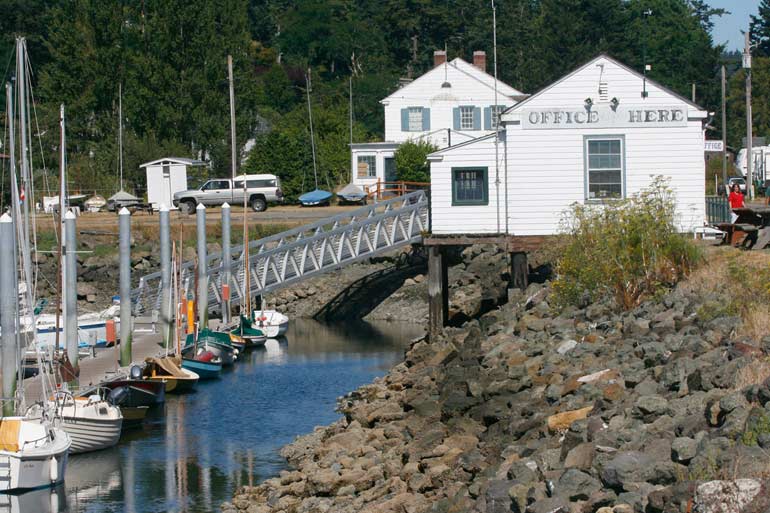by Larry Crockett, Executive Director
As you may be aware, the Port is preparing to embark on a much needed project to replace the Point Hudson Breakwater. The current breakwater was constructed in WWII, and while it has been repaired a number of times in the past seven decades, time and nature have taken their toll. The relatively toxic, creosote pilings are failing, and the relatively soft Mats Mats rock used in the riprap is breaking up and falling between the pilings, which is adding instability to the structure. Engineering studies have said that while the structure has a few more years left in it, the Port would be wise to replace the breakwater, which protects all of the Point Hudson marina complex.
In our January 28 Commission meeting, the Commissioners approved a contract for environmental and technical support for the in-water permitting related to the project. Whenever we need to do work in the water, permitting is a difficult and lengthy process. Working with agencies such as the Department of Natural Resources, The Army Corps of Engineers, the City of Port Townsend, The WA Department of Ecology and others, we anticipate that permitting will take about a year and a half to complete.
So if all goes well, we hope to begin work on replacing the breakwater in 2016. This newer breakwater will have a slightly smaller footprint, and be much more environmentally-friendly, using steel piles instead of creosote. While the new riprap will use a more durable rock, we actually hope to use some of the existing Mats Mats rock in the deeper water for marine habitat. The total project cost should come in at around $5 million. We are applying for a significant federal grant; the rest of the project will be funded through our existing bonding capacity and general fund.
The breakwater protects the entire Point Hudson marina, and thus impacts all of the transient moorage, the Wooden Boat Festival, the NW Maritime center, and all of the businesses contained in Point Hudson. This is a huge part of our community’s economic vitality, and we look forward to having a breakwater that will last at least another 70 years.
We’ll be communicating more about the breakwater over the next year – and of course, please let me know if you have any questions/concerns.

